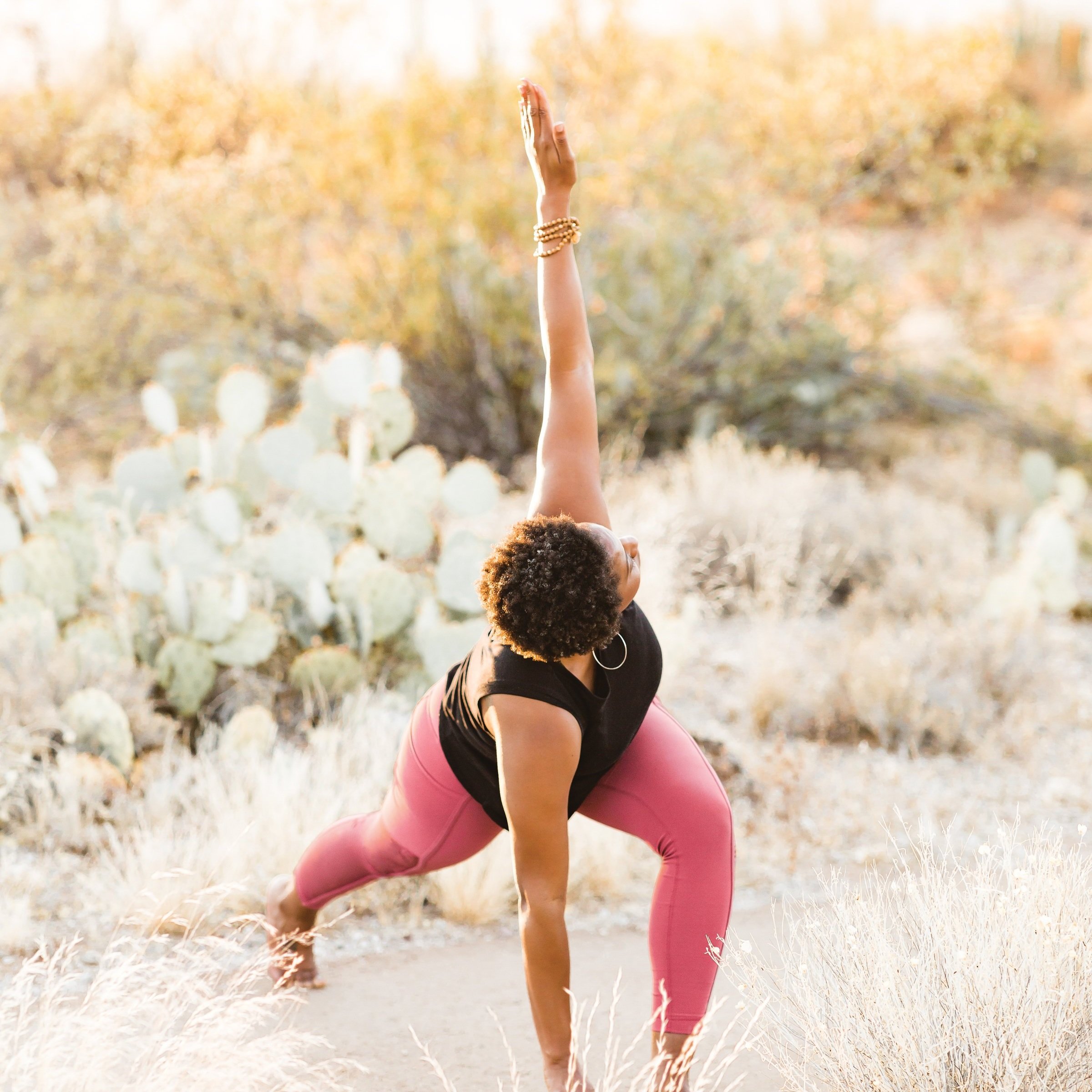The Inconvenient Mental Health Benefits of Exercise for Anxiety
It's inconvenient how much exercise really does help your mental health. Why does something so effective take so much darn effort? And why is it especially hard when your mental health isn't its best? While it's not the only solution, we think exercise is an important part of your holistic wellness plan. It isn't just about breaking a sweat and releasing those feel-good endorphins. Movement is a powerful tool that can work wonders for regulating your nervous system and boosting brain function.
Regulating Anxiety Through Exercise
Now, we don't want to join the chorus of people claiming you just need to go for a run to cure your anxiety. It's not that simple. But it can be an important part of your personal recipe for good mental health. Let's explore how different types of exercise can target conditions like depression and anxiety when incorporated into a holistic mental health plan.
We also want to be mindful of how exercise culture can impact those with body image issues or a history of disordered eating. If this is something you've struggled with, practice extra self-compassion and steer clear of things that trigger you.
Exercise for Depression: Finding Your Cardio Sweet Spot
For those battling depression, incorporating cardio into your routine can be a game-changer. Start slowly and with self-compassion. Running, swimming, or cycling help regulate the nervous system up, elevating mood and reducing symptoms of depression. It's all about finding your optimal amount to get those endorphins flowing and lift your spirits.
Benefits of Cardio for Depression
Elevates mood and reduces symptoms of depression.
Regulates the nervous system, promoting relaxation and stress reduction.
Enhances overall cardiovascular health, contributing to a sense of well-being.
Exercise for Anxiety: The Power of Strength Training
Anxiety sufferers may benefit from incorporating strength training into their regimen. Strength training exercises, such as weightlifting, yoga, and pilates, help regulate the nervous system by promoting relaxation and reducing stress hormones. By engaging in regular strength training, you can dial down anxiety levels and cultivate a greater sense of calm and control.
Benefits of Strength Training for Anxiety
Promotes relaxation and reduces stress hormones.
Builds physical strength and resilience, translating to greater mental fortitude.
Fosters a sense of empowerment and control over anxiety symptoms.
The Power of Combination Exercise: Cardio and Weights for Mental Health
For those looking to supercharge their mental health, combining cardio and strength training can yield even greater benefits. By using a mix of cardio and strength training, you can powerfully address both depression and anxiety.
Benefits of Combining Cardio and Strength Training:
Provides a comprehensive approach to mental health maintenance.
Maximizes mood-enhancing effects and stress reduction.
Enhances overall physical and mental resilience.
Overcoming the Motivation Hurdle: Starting Small
While the benefits of exercise are undeniable, getting started can be the hardest part. This is especially true for people with mental health challenges. Try to approach exercise with patience and self-compassion. Find small daily habits that feel achievable and build over time. Whether it's a short walk around the block, a gentle yoga session, or setting a ten minute timer to race around the house collecting laundry and dishes, every step counts towards improving your mental health. We love to hear people's personal movement routines because they're so specific to who you are and what you love.
Two Birds With One Effort: Social Movement
We love when people find ways to structure in meaningful connection and movement. Whether it's taking your dog on more hikes or catching up with a friend after pilates class, moving with pets and friends doubles the benefit to your mental health.
Finding Your Ideal Exercise Dosage For Mental Health
Discovering the right amount and type of exercise for your mental health is key. Try different activities, from solo pursuits like walking or cycling to group activities such as fitness classes or team sports. Experiment with mixing cardio and strength training to find what suits you best. Be flexible with your routine, adjusting intensity and frequency according to how you feel each day. Over time, you can find the dosage and frequency of exercise that has the greatest benefit to your mental health.
The Most Important Part of Exercise: Fun
This may sound like a tall order to some people. But it's so important to focus on enjoying your workouts rather than seeing them as chores. Choose activities that excite you, whether it's dancing, hiking, or trying out new fitness trends. This isn't to say that some days it won't be hard to motivate yourself. Of course you'll have days you don't want to put on your workout gear. By making movement a pleasurable part of your routine, you'll be more likely to stick with it in the long run. You deserve to enjoy your mental health journey as much as possible. If that means blasting your favorite music and dancing around the house, we're totally here for that.
Gentle Exercise We Love For People With Anxiety
Here are some simple yet effective exercise options that can benefit depression or anxiety:
Walking For Anxiety
Walking is one of the easiest and most accessible forms of exercise. Take a stroll around your neighborhood or a nearby park. Start with short walks and gradually increase the duration as you feel more comfortable.
Yoga or Tai Chi For Anxiety
Yoga combines gentle movements with breathing and mindfulness techniques, making it a great choice for reducing stress and anxiety. There are many beginner-friendly yoga videos available online, or you can attend a local class for guidance and support. Tai Chi is a low-impact exercise that focuses on slow, flowing movements and deep breathing. It can help improve balance, flexibility, and relaxation while reducing stress and anxiety. Look for beginner Tai Chi classes or follow along with instructional videos at home.
Swimming For Anxiety
Swimming is a full-body workout that is gentle on the joints and provides a sense of weightlessness that can be soothing. Whether you swim laps in a pool or take a dip in a lake or ocean, swimming can help decrease symptoms of depression and anxiety.
Cycling For Anxiety
Cycling is a low-impact exercise that can be done at your own pace. Whether you ride a stationary bike or adventure outdoors, cycling can boost your mood and improve your overall well-being. Start with short rides and increase your distance and intensity over time.
Gardening For Anxiety
Gardening combines physical activity with the benefits of being outdoors and connecting with nature. Planting, watering, weeding, and tending to your garden can be a relaxing and rewarding way to reduce stress and improve your mood.
Dance For Anxiety
Dancing is a fun and expressive way to move your body and release tension. Put on your favorite music and dance around your living room, join a dance class, or follow along with dance workout videos YouTube. Let loose and enjoy the rhythm!
Stretching For Anxiety
Stretching exercises, such as Pilates or yoga, can help relax tense muscles, improve flexibility, and promote a sense of calm. Dedicate a few minutes each day to gentle stretching movements to relieve stress and increase your body awareness.
Hiking For Anxiety
combines physical activity with the benefits of being outdoors and connecting with nature. Hiking can provide a refreshing change of scenery and a break from everyday stressors. Explore local trails or nature reserves and enjoy the benefits of movement combined with the tranquility of the outdoors. Bring your dog or a friend for even greater benefit.
Group Fitness Classes For Anxiety
Joining group fitness classes can offer social support, accountability, and motivation. Choose classes like Zumba, aerobics, or group cycling. Exercising with others can make the experience more enjoyable and rewarding. It's good for your brain too!
Movement: Enhancing Your Brain Beyond Mood Elevation
Cognitive Benefits Of Exercise For Lifelong Mental Wellness
Regular physical activity fortifies both body and mind. Here's how:
Heightened Planning, Organization, and Spatial Intelligence
Exercise challenges your brain to coordinate movements and navigate space, boosting planning and organizational skills. Activities like yoga enhance spatial intelligence, vital for problem-solving.
Structural Brain Transformations
Studies show exercise increases gray matter volume, improves white matter quality, and reduces brain MRI hyperintensities. These changes promote neuroplasticity, crucial for learning and memory.
Enhanced Attention and Executive Function
Exercise boosts attention span, concentration, and executive function. It elevates blood flow to the brain and releases mood-regulating neurotransmitters.
Improved Memory Function
Exercise benefits both short-term and general memory, especially in older adults. Aerobic exercise increases hippocampal volume, essential for memory.
Integrating Movement for Brain Empowerment
Incorporate physical activity into your routine to amplify cognitive function and brain health. Whether it's walking, gym sessions, or yoga, find activities you enjoy for enduring cognitive well-being.
Nurturing Your Mental Health Through Holistic Therapy For Anxiety and Trauma
Exercise offers a transformative pathway to enhanced mental wellness. But it's just one part of a whole-person plan to help you live your best life. We like to look at all layers of person that affect their mental health: physical health, behavoral health, social health, and a sense of purpose and meaning. If you're struggling with anxiety, trauma, or relationship issues, consider reaching our to our therapists. We offer a free consultation to hear what's going on with you and discuss how therapy can support you.







